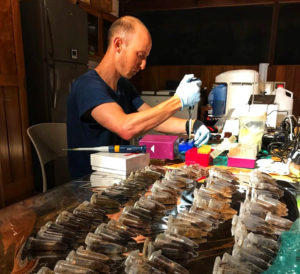This blog was written by guest blogger and 2018 Promega Social Media Intern Logan Godfrey.
Only 30 years ago, the polymerase chain reaction (PCR) was used for the first time, allowing the exponential amplification of a specific DNA segment. A small amount of DNA could now be replicated until there was enough of it to study accurately, even allowing sequencing of the amplified DNA. This was a massive breakthrough that produced immediate effects in the fields of forensics and life science research. Since these technologies were first introduced however, the molecular biology research laboratory has been the sole domain of PCR and DNA sequencing.
While an amazing revolution, application of a technology such as DNA sequencing is limited by the size and cost of DNA sequencers, which in turn restricts accessibility. However, recent breakthroughs are allowing DNA sequencing to take place in jungles, the arctic, and even space—giving science the opportunity to reach further, faster than ever before.

Gideon Erkenswick begins extractions on fecal samples collected from wild tamarins in 2017. Location: The GreenLab, Inkaterra. Photo credit: Field Projects International.
The newfound accessibility of DNA sequencing means a marriage between fields of science that were previously largely unacquainted. The disciplines of genomics and wildlife biology/ecology have largely progressed independently. Wildlife biology is practiced in the field through observations and macro-level assessments, and genomics, largely, has developed in a lab setting. Leading the charge in the convergence of wildlife biology and genomics is Field Projects International.
Continue reading “Deep in the Jungle Something Is Happening: DNA Sequencing”

